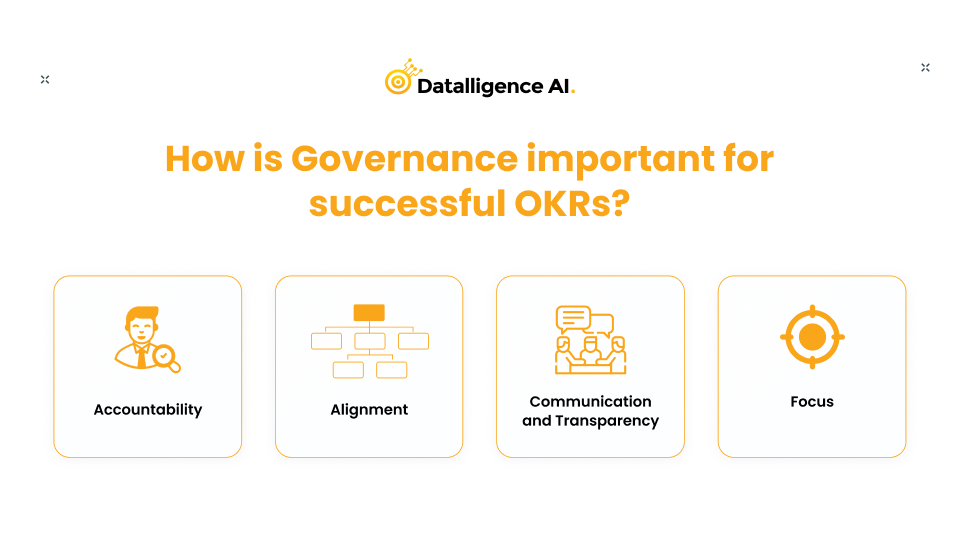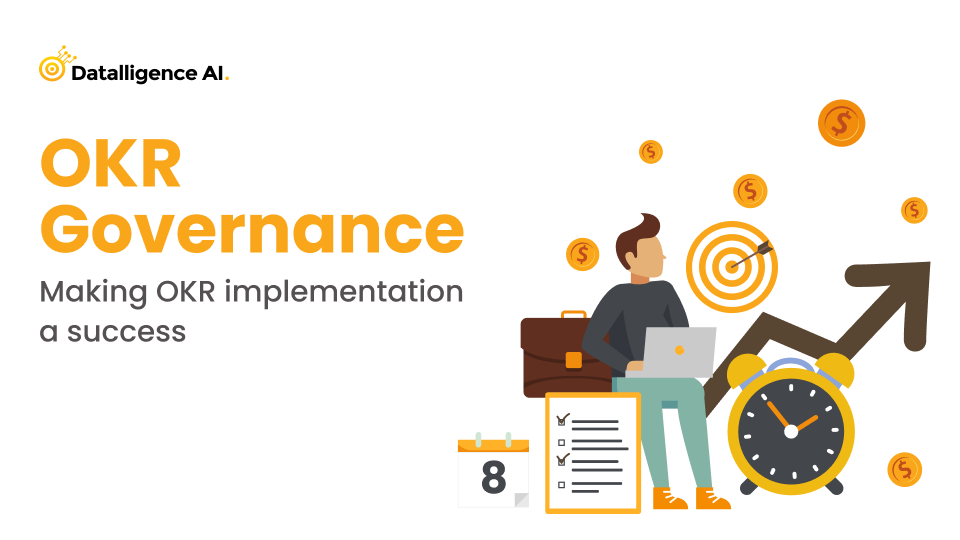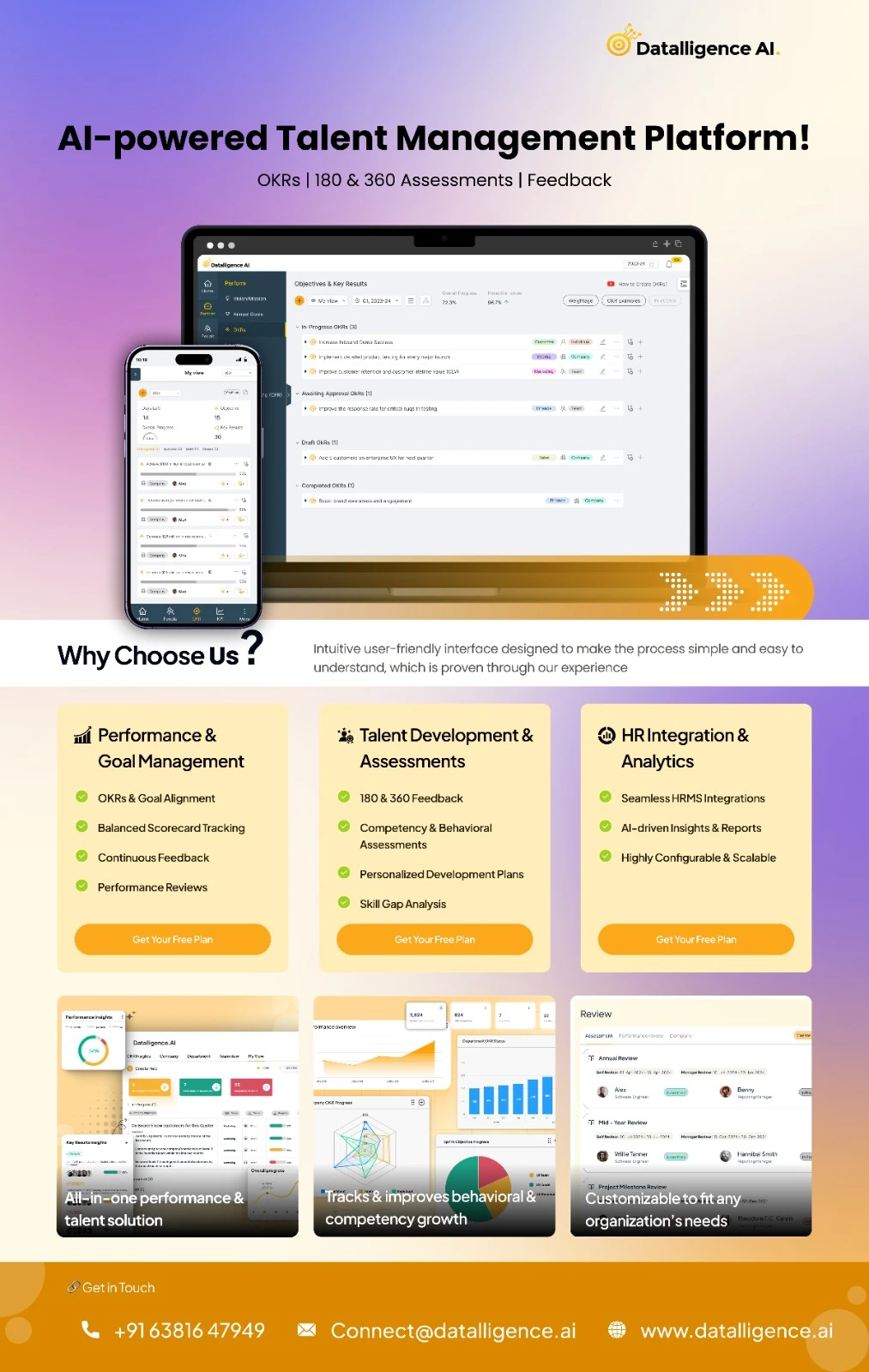Setting attainable, realistic, and attractive goals takes time and work. Even if your OKR Goal setting methods are sound, they will only be helpful with a governance system to ensure their implementation.
Organizations require a system to assess performance and identify areas that need to be changed or improved.
Let’s examine corporate governance and how it might support your organization in maximizing the effectiveness of OKRs.
Before that let us dive into on OKR Goal setting methods and OKR Governance.
What is OKR Goal Setting Method?
OKRs or (Objective and Key Results) is a powerful goal-setting framework used by individuals, employees, and organizations to set clear measurable goals and objectives and track their progress toward achieving them. It not only helps you accomplish your key goals, but it also evaluates the performance of your team and lets you know how engaged your employees are. Because OKRs are so open, it is simple for the team to align around achieving the goal.
OKRs provide a structured way of setting ambitious goals and tracking their progress in a transparent and measurable
Objectives: They are high-level goals an individual and organizations want to achieve. Objectives are more qualitative and provide direction and focus.
Key Results: Key Results are the measurable and specific outcomes that indicate the process toward achieving the objective. Key results are more quantitative since define criteria for success.
OKRs are set usually set for some time of monthly, quarterly, or annually also. OKRs promote transparency, and accountability within teams and encourage them to work together for achieving the bigger picture.
You can also Talk to our OKRs experts and Coaches on this topic and gain more insights.
What is OKR Goal Setting Method Governance?
Governance serves as the backbone of any organizational process including OKRs.
Corporate governance refers to the management’s oversight or administration of a company or organization. This framework was developed by decision-makers who had the authority and responsibility to do so. It is simpler to manage the issues facing the company or organization thanks to corporate governance. It guarantees that you have sufficient decision-making controls and procedures to weigh the demands and interests of all parties.
An organization’s implementation, monitoring, and evaluation of OKRs are managed by a set of procedures, guidelines, and structures known as OKR governance. Guarantee that OKRs are in line with the organization’s vision and strategic priorities, it involves defining roles and responsibilities, creating communication channels, and exercising oversight.
The ultimate purpose of OKR governance is to conduct business or manage a firm in a way that makes it possible to accomplish all goals and objectives.
How is Governance Important for Successful OKR Goal Setting Method ?

To align everyone’s interests, governance establishes a system of procedures and guidelines that determines how to run a business or company most effectively.
Following are some of the main advantages of using this system along with OKRs.
Accountability
OKR governance and Accountability go in hand hand. The main purpose of OKR governance is to drive performance and accountability so that everyone understands the process. For each objective and Key result, OKR Governance helps you define clear ownership and accountability.
But, setting up an OKRs program does not magically improve focus, alignment, or accountability. There must be two supporting structures in place to ensure accountability.
Negotiation is the first supporting structure. Negotiations result in effective OKRs. When a team has finished writing its OKRs, it should present them to the boss and have a productive discussion about
- Whether or not they accurately reflect the organization’s strategy.
- Do they show that they comprehend the direction the company wants to take?
- Do we make it clear how we plan to contribute?
- Is the stretch at the right intensity?
Majorly businesses prefer to write OKRs from the bottom up. To make sure the chosen OKRs will benefit the company, there should be a top-down discussion.
Retrospective analysis is the second pillar of accountability. You can be sure that you won’t quickly forget about the OKRs if you conduct retrospectives. A meeting to review and discuss the results must be held at the end of the quarter.
These discussions go beyond simply reporting the results because you also need to consider what you discovered about the company, what occurred, why it occurred, and whether the OKRs add value to the organization.
Alignment
Companies tend to adopt OKRs when they want to foster alignment between employees and between departments. However, achieving alignment is usually the struggle that a company faces in its OKR Journey.
There are two types of alignment.
- Strategic Alignment
- Horizontal Alignment
Strategic Alignment refers to whether the objectives that are set are strategically aligned with the company’s goals and strategies. Horizontal Alignments refer to how a team can cross-functionally align themself with other departments.
OKR Governance ensures that OKRs are aligned with the overall mission, vision, and the strategy of the company. This alignment helps in avoiding silos and promotes collaboration across teams and departments.
Communication and Transparency
Effective governance of OKRs is based on effective communication. Everyone in the organization can see goals and progress, which encourages trust, cooperation, and accountability. Teams and individuals can communicate regularly to share updates, difficulties, and successes using tools like progress dashboards, OKR update meetings, or software. Transparent communication makes sure that everyone is aware of their contributions and how they affect the overall objectives of the organization.
Focus
The underlying theme of OKR is the focus. OKRs’ main purpose is to let the employees focus on what is important right now and give clarity and prioritization on what matters. The key to writing a good and value-driving OKR is the focus. If the OKRs are too vague and not specific, it will be difficult for the team members to attain them.
OKR Governance is the Secret Ingredient
The governance of OKRs is essential for keeping the spotlight on high-impact initiatives. Organizations can focus their efforts and resources on the most important areas by ranking their objectives and key results. This focus prevents teams from being overburdened with objectives and enables them to concentrate on what matters, resulting in increased efficiency and productivity.
Strategies for Successful OKR Governance
Clear Communication
Successful OKRs governance is built on effective communication. To ensure that all groups and individuals are aware of the organization’s overall goals, leaders must effectively communicate those goals. Regular communication channels help reinforce the significance of OKRs and foster a sense of shared understanding throughout the organization, such as town hall meetings, newsletters, and team updates.
Cascading OKRs
Cascading OKRs involves dividing broad objectives into smaller, more detailed goals for various groups and individuals. This procedure guarantees coordination and establishes a distinct hierarchy of goals across the organization. Maintaining alignment and coherence between the goals at various levels is crucial when cascading OKRs.
Goal setting and Prioritization
Setting up a clear process for prioritizing and setting goals is essential. The opinions of a variety of stakeholders, including managers, employees, and leaders, should be incorporated into this process. Setting ambitious, measurable, and time-bound goals that are in line with the organization’s strategic direction should be accompanied by clear guidelines.
Prioritization helps prevent individuals and teams from focusing on too many goals and allows them to concentrate on the most important ones.
Conclusion
The ability to drive and monitor progress over time depends on a consistent governance system. You can fully take advantage of your OKR system if your structure is sound.
If you’re beginning this process, keep in mind to establish clear OKR ownership and hold regular meetings to encourage ongoing engagement. Talk to our experts and coaches who have been experts in the field of OKR for the past 10 years and gain more insights or Try Datalligence for free and start your journey toward success.












